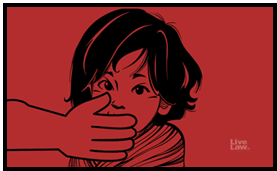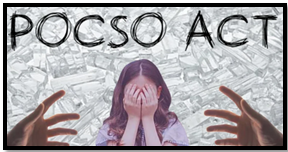DOWNLOADING CHILD PORNOGRAPHY IS AN OFFENCE
Relevance:
GS 1 and 2
- Welfare schemes for vulnerable sections of the population by the Centre and States and the performance of these schemes; mechanisms, laws, institutions and Bodies constituted for the protection and betterment of these vulnerable sections.
- Role of women and women’s organization, population and associated issues, poverty and developmental issues, urbanization, their problems and their remedies.
Why in News:
- Recent judgment by the Madras High Court in the case of S. Harish vs Inspector of Police.
- The court ruled that downloading child pornography was not an offense under Section 67B of the Information Technology (IT) Act, 2000, reasoning that viewing such material in private does not constitute an offense.
Source- Live Law
The Protection of Children from Sexual Offences (Amendment) Act, 2019 defines child pornography as any visual depiction of sexually explicit conduct involving a child including photograph, video, digital or computer generated image indistinguishable from an actual child.
| The Information Technology (IT) Act, 2000
The Information Technology (IT) Act, 2000, is a comprehensive law that addresses various aspects of electronic commerce and cybercrimes in India, with specific provisions related to the distribution of pornographic materials. Here are detailed points on the relevant sections and their implications: General Overview Objective: The IT Act was enacted to provide a legal framework for electronic governance by recognizing electronic records and digital signatures. It aims to address the challenges posed by the internet and digital technology, including cybercrime and electronic commerce. Provisions Related to Pornography Section 67 – Publishing or transmitting obscene material in electronic form: · Prohibition: This section makes it illegal to publish or transmit any material that is lascivious or appeals to the prurient interest, or if its effect is such as to tend to deprave and corrupt persons who are likely to read, see, or hear the material. · Penalty: The punishment for a first conviction is imprisonment of up to three years and a fine that may extend to five lakh rupees. For a second or subsequent conviction, the imprisonment may extend to five years and the fine to ten lakh rupees. Section 67A – Publishing or transmitting of material containing sexually explicit act, etc., in electronic form: · Prohibition: It specifically targets content that includes sexually explicit acts or conduct in electronic form. Unlike Section 67, which deals with obscenity broadly, Section 67A focuses on sexually explicit material. · Penalty: For a first conviction, imprisonment can extend up to five years and a fine up to ten lakh rupees. For subsequent convictions, imprisonment can extend to seven years and a fine up to ten lakh rupees. Enforcement and Impact · Enforcement Mechanisms: The IT Act empowers the government and law enforcement agencies to take action against violators. This includes the authority to block access to websites, remove content from the internet, and arrest and prosecute individuals involved in the creation, distribution, or consumption of illegal content. · Cyber Cells: Specialized units known as cyber cells have been established in various Indian states to enforce the IT Act and handle cybercrimes effectively. Indian Penal Code (IPC): The IPC, which is the primary criminal code of India, also contains provisions related to obscenity (Section 292) and indecent representation of women (Section 294), which can be applied to cases involving pornography. |
Interpretation of the Law
- The High Court referred to a case from the Kerala High Court regarding watching pornography in private spaces, which does not fall under Section 292 of the Indian Penal Code (IPC).
- However, it is crucial to note that watching adult pornography in privacy does not equate to the offense of downloading sexually explicit material involving children.
Analysis of Section 67B of the IT Act
- Section 67B(b) of the IT Act specifically criminalizes actions like downloading child pornography material.
- The judgment of the Madras High Court failed to consider the explicit provisions of this section, focusing solely on private viewing without acknowledging the act of downloading itself as an offense.
Flaws in Precedent Reference
- The High Court’s reliance on a precedent from the Kerala High Court was misplaced, as it did not pertain to child pornography.
- Unlike adult pornography, downloading sexually explicit material involving children is an offense under the IT Act.
Utilization of Legal Powers
- The Madras High Court utilized its inherent powers under Section 482 of the Criminal Procedure Code (CrPC) to quash the judicial proceedings.
- However, this action seems inappropriate as the offense under Section 67B(b) of the IT Act was clearly established.
Addressing Legal Inconsistencies
- Section 67, along with Sections 67A and 67B of the IT Act, constitute a comprehensive legal framework for dealing with offenses related to pornography.
- There is a need to amend the POCSO Act to ensure consistency with the provisions of the IT Act, particularly regarding possession of child sexual abuse material (CSAM).
- Terming it as CSAM instead of child pornography acknowledges the lack of consent involved and reflects the severity of the offense.
- The State government should appeal against the judgment to prevent setting a detrimental precedent.
Protection of Children from Sexual Offenses (POCSO) Act, 2012:
· The POCSO Act was amended in 2019 to introduce stricter measures, including the death penalty for aggravated sexual assault on children. · The Protection of Children from Sexual Offences (Amendment) Act, 2019, includes provisions aimed at combating child pornography. · According to the amended act, individuals using children for pornographic purposes face imprisonment for a minimum of five years and are liable for fines. Subsequent convictions carry harsher penalties. Other Initiatives: · Information Technology (IT) Act 2000: Provides legal frameworks to address cybercrimes, including child pornography. · Child Abuse Prevention and Investigation Unit: Dedicated units focused on preventing and investigating cases of child abuse. · Beti Bachao Beti Padhao: A government initiative promoting the welfare and education of girls, indirectly contributing to the prevention of child abuse. · The Juvenile Justice (Care and Protection of Children) Act, 2015: Designed to ensure the care, protection, and rehabilitation of children in need, including victims of abuse. · Child Marriage Prohibition Act (2006): Aimed at eradicating child marriages, which often expose children to various forms of abuse. · Child Labour Prohibition and Regulation Act, 2016: Seeks to eliminate child labor and protect children from exploitation in the workforce. · POCSO Courts under Special Fast Track Courts: Specialized courts established to expedite the trial and resolution of cases related to child sexual offenses, ensuring swift justice for victims. |
Source
The Hindu
https://epaper.thehindu.com/reader?utm_source=Hindu&utm_medium=Menu&utm_campaign=Header
Mains Question
Critically analyze the recent judgment of the Madras High Court regarding the offense of downloading child pornography material, particularly in light of Section 67B(b) of the Information Technology (IT) Act, 2000. Discuss the implications of the court’s interpretation on the legal framework governing offenses related to child sexual abuse material (CSAM) and the Protection of Children from Sexual Offences (POCSO) Act, 2012.

 Source- Live Law
Source- Live Law Source:- Himalayan Express
Source:- Himalayan Express

